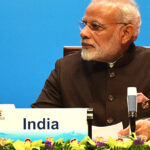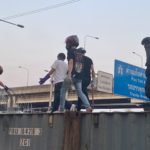
February 28 represented a notable turn of events for pro-democracy protesters. Thousands of demonstrators gathered at Victory Monument for a rally organized by the Free Youth group, now rebranded as “Restart Democracy” or “REDEM.” The event, cloaked in the banners and flags of the Milk Tea Alliance, targeted Thai Prime Minister Prayut Chan-o-cha’s residence at the 1st Infantry Regiment. The Free Youth group aimed to cast a wide net for the Sunday demonstration, encouraging those from Myanmar to come out as well as Thais in fighting back against perpetual authoritarian rule. The REDEM branding also was an attempt to restart or breathe life back into the protest movement which has dimmed slightly, partially due to a COVID-19 outbreak, the recent jailing of prominent leaders who are pending trial on Article 112 charges, as well as the possibility of waning public enthusiasm.

Protest movements are often cyclical. The early stages of a protest movement sometimes produce a viral effect, with international media attention, the support of human rights and pro-democracy organizations, and the ubiquitous Twitter and Facebook hashtags permeating social media. Like many other white-hot media-driven stories, protest movements often pass away as well. The key for protest organizers is knowing how to respond appropriately when the spotlight fades and public attention begins to fall away.
Everyday life creeps into protests in a way that organizers cannot otherwise explain. Protest movements require time and energy—commodities that are often exhausted early. The act of public protesting often consumes people to the point that routine aspects of life are temporarily set aside. When protesters tire out, the ordinary pressures and routines of life take over, not to mention any legal peril that confrontations with authorities may bring. Lastly, some may become frustrated with the lack of progress and may redirect their energies through more traditional political channels. In other words, people rarely wait for the next viral event to take place. They move on.
A Carnegie Endowment for International Peace study suggests that even when protests die down, options eventually present themselves. They often lie low, in part to protect themselves from government repression, they adopt new forms of organization and resistance, or move into more low-profile forms of community organizing. This was the case of Red and Yellow shirt activists after the 2014 coup, when large-scale mobilization was banned. Hibernation persisted until the March 2019 election provided an opportunity to reorganize.
Free Youth have not waited long enough for a new opportunity to reinvigorate the pro-democracy movement and a tragedy of unforced errors have derailed support from the Thai public. Free Youth or REDEM attempted to respond to changing dynamics last December with a major ideological shift that sparked controversy. Their“Restart Thailand” logo—no relation to the similar PDRC slogan —featured a red background with the letters R and T designed in a way that resembled the hammer and sickle, an ever-present symbol of Communism. The reinvention stunt backfired. Ratsadon protest leader Parit Chiwarak immediately distanced himself from the Free Youth symbol and a fracture between the two main groups developed.
Last Sunday’s protest also brought out the worst in protesters—as well the usual violent response by the Royal Thai Police. The Enquirer’s Erich Parpart carefully described events that provided additional fuel for the Thai government’s propaganda and misinformation campaigns or worse, further endorsements of state violence. As Erich detailed the trending “#ม็อบสวะ” hashtag, he detailed both a group of police officers beating up an unarmed protester, as well as a footage of a protestor urinating on a group of police officers from the top of a storage container. Some protesters resorted to other acts of violence at the REDEM-sponsored demonstration, including throwing rocks and “ping pong” bombs at police, in addition to burning down a police vehicle. According to the Erawan Emergency Medical Service Centre, 22 police officers and 10 protesters were injured during the outbreak of violence including a police officer who died from a heart attack while on duty. Police resorted to firing rubber bullets, as well as using water cannons and tear gas at protesters as they tried to advance toward Prayut’s residence. Despite a lack of accountability and a lack of message and behavioral discipline on the part of protesters, another “leaderless” protest is scheduled for this Saturday.
The consequences of Free Youth’s myriad of mistakes and profound lack of judgment are potentially devastating to the pro-democracy movement in Thailand. Clearly, the “leaderless” protest on Sunday did not give rise to a single individual who would reinforce message discipline among protesters and denounce any act of violence. This does not appear to be a group that has learned the historical lessons of nonviolent civil disobedience. Discipline is paramount to success. Justifying the smallest acts of violence, as evidenced during the George Floyd protests last year or Hong Kong in 2019 only serve to legitimize violent responses and erode public sentiment.
The reality is that Free Youth, despite their sincere desire to transform Thailand into a more equitable society have done more harm to the pro-democracy movement than good. Without serious soul searching and a rededication to the nonviolent principles and original demands that facilitated the movement’s growth, it will likely keep making the same fateful mistakes. Sooner or later, organizers will have to start asking the question whether the movement would be better off without Free Youth—or REDEM—and the distractions they now often bring.
UPDATE: Video footage later revealed that the REDEM protester pretended to urinate on the police.






